Building a fragrance collection is not just for perfume obsessives. Nearly everyone has a scent memory locked into their mind and research shows that certain perfumes can instantly lift your mood or trigger nostalgia. Most people think a massive shelf of bottles is what matters. The real secret? Carefully choosing and organising just a few scents can completely transform your daily life.
Table of Contents
- Step 1: Define Your Fragrance Preferences
- Step 2: Research And Identify Key Fragrance Types
- Step 3: Set A Budget For Your Collection
- Step 4: Explore And Sample Different Fragrances
- Step 5: Curate A Balanced Selection Of Scents
- Step 6: Organise And Maintain Your Fragrance Collection
Quick Summary
| Key Point | Explanation |
|---|---|
| 1. Define your fragrance preferences | Begin by identifying scents that evoke positive emotions or memories to understand your unique tastes in fragrance. |
| 2. Research fragrance types | Explore different fragrance families to gain insight into their characteristics, helping you make informed selections. |
| 3. Set a budget for your collection | Establish a financial framework to avoid impulsive purchases and make thoughtful decisions about your fragrance investments. |
| 4. Sample fragrances systematically | Test various scents on your skin over time to evaluate how they develop and complement your personal chemistry. |
| 5. Organise and maintain your collection | Keep your perfumes stored properly to preserve their quality, and maintain a record of usage and condition for longevity. |
Step 1: Define Your Fragrance Preferences
Building a remarkable fragrance collection begins with understanding your personal scent preferences. Think of this initial step as creating a sensory roadmap that will guide your perfume exploration journey. Your goal is to develop a nuanced understanding of which fragrances resonate with your personality, lifestyle, and emotional landscape.
Start by examining your current relationship with scents. What fragrances have you enjoyed in the past? Consider moments where a particular perfume made you feel confident, elegant, or nostalgic. Pay attention to the emotions and memories associated with different aromas. Some individuals are drawn to fresh, aquatic notes that remind them of seaside holidays, while others prefer warm, woody fragrances that evoke comfort and sophistication.
To systematically explore your preferences, consider creating a fragrance profile. Visit local perfume boutiques or department stores and request scent sampling strips. Experiment with various fragrance families such as:
- Floral: Rose, jasmine, and lily based scents
- Oriental: Warm, spicy fragrances with vanilla or amber undertones
- Fresh: Citrus and green notes that feel crisp and clean
- Woody: Sandalwood, cedar, and earthy aromas
- Gourmand: Sweet, edible-like scents with chocolate or caramel hints
Note which categories spark your interest and make you feel most authentically yourself.
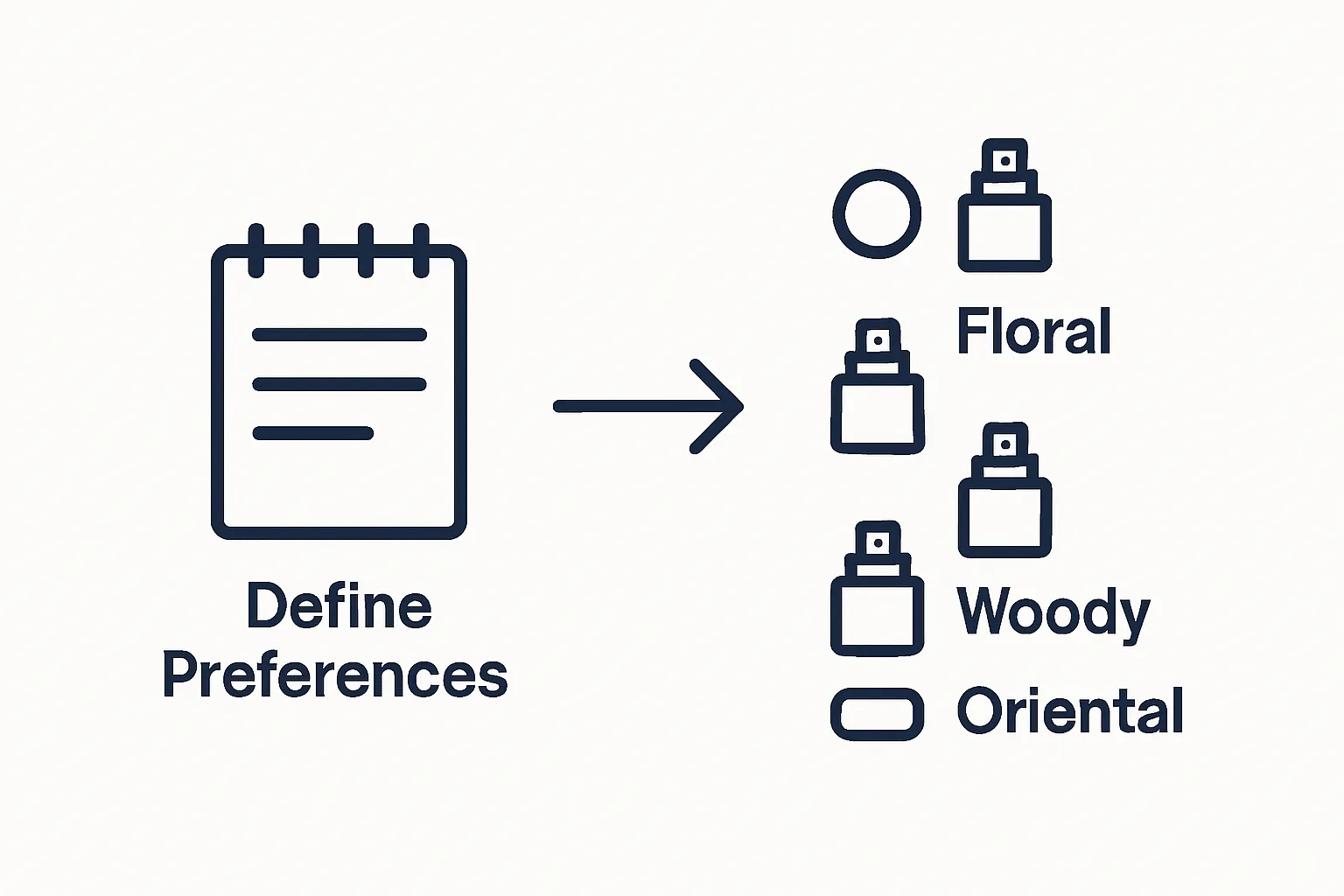 Explore our guide on shopping by fragrance family to understand these categories more deeply.
Explore our guide on shopping by fragrance family to understand these categories more deeply.
Remember that discovering your fragrance preferences is an intimate, personal journey. Do not rush the process. Take time to test different perfumes on your skin, as fragrances interact uniquely with individual body chemistry. What smells enchanting on a paper strip might transform completely when worn directly on your skin.
A successful fragrance profile emerges from patient exploration, self-reflection, and a willingness to step outside your comfort zone. By the end of this step, you should have a clearer understanding of the scent families and specific notes that genuinely resonate with your personal style and emotional landscape.
Step 2: Research and Identify Key Fragrance Types
Now that you have begun understanding your personal scent preferences, it is time to dive deeper into the complex world of fragrance types. Research is critical in transforming your initial intuitions into a comprehensive fragrance collection strategy. Think of this step as building your aromatic intelligence, where knowledge becomes the foundation of sophisticated perfume selection.
Fragrance classification is more than just categorization—it is about understanding the intricate language of scents. Professional perfumers divide fragrances into specific families that communicate mood, season, and personal style. Learn more about identifying fragrance notes naturally to deepen your understanding.
Begin your research by exploring each major fragrance family in depth. Each category carries distinct characteristics that will help you curate a versatile collection. Consider the following families and their quintessential attributes:
- Floral: Romantic, feminine, featuring rose, jasmine, and lily notes
- Oriental: Mysterious, warm, with spicy and resinous undertones
- Woody: Sophisticated, grounded, emphasizing sandalwood and cedar
- Fresh: Energetic, clean, highlighting citrus and green botanical elements
- Gourmand: Indulgent, sweet, mimicking edible ingredients like vanilla
Do not merely read about these categories—immerse yourself in them. Visit perfume counters, request samples, and systematically test fragrances within each family. Pay attention to how different notes interact on your skin, how longevity varies, and which emotional responses each scent triggers.
Document your findings meticulously. Create a personal scent journal where you record your impressions, noting not just the fragrance family but specific notes that resonate with you. Record details like wearing duration, compliments received, and personal comfort levels. This methodical approach transforms fragrance selection from a random experience into a deliberate, informed practice.
By the conclusion of this research phase, you should have a clear, nuanced understanding of fragrance families and their unique characteristics. Your goal is not just knowledge, but the ability to confidently articulate and select perfumes that genuinely reflect your personality and style.
To help you navigate and select the right fragrances for every situation, the following table summarises the core scent types, their main characteristics, and the typical occasions they suit.
| Fragrance Family | Key Characteristics | Suitable Occasions |
|---|---|---|
| Floral | Romantic, feminine, featuring rose, jasmine, lily | Daily wear, spring, daytime events |
| Oriental | Warm, spicy, mysterious, amber undertones | Evenings, special occasions, autumn/winter |
| Woody | Sophisticated, grounding, sandalwood, cedar | Workplace, formal events, colder months |
| Fresh | Energetic, clean, citrus, green notes | Casual outings, summer, sports activities |
| Gourmand | Sweet, edible, chocolate, caramel hints | Leisure, cosy gatherings, winter |
Step 3: Set a Budget for Your Collection
Building a fragrance collection is an art of balance—not just in scent selection, but in financial planning. Establishing a realistic budget prevents impulsive purchases and ensures you create a thoughtful, curated collection. Your budget will be the guardrail that transforms fragrance collecting from an expensive hobby into a sustainable passion.
Begin by conducting an honest assessment of your current financial situation. Fragrance collections can range dramatically in price, from affordable designer-inspired options to extravagant luxury perfumes. Explore our fragrance shopping guide to understand pricing strategies and value considerations.
Consider creating a tiered budget approach that allows flexibility and strategic purchasing. A sensible framework might look like this:
- Foundational Fragrances: 40% of budget (versatile, everyday scents)
- Statement Perfumes: 30% of budget (special occasion or unique fragrances)
- Experimental Purchases: 20% of budget (samples, niche fragrances)
- Collection Maintenance: 10% of budget (replacements, storage)
Remember that quantity does not equal quality. A well-chosen collection of five exceptional fragrances is far more valuable than twenty mediocre bottles cluttering your shelf. Focus on acquiring perfumes that truly speak to your personal style and bring you genuine joy.
Utilize strategic purchasing techniques to maximise your budget. Look for gift sets, travel sizes, and seasonal sales. Many boutique perfume retailers offer sampler sets that allow you to experience multiple fragrances at a fraction of full-bottle costs. These miniature versions are excellent for testing and expanding your olfactory horizons without significant financial commitment.
Consider implementing a purchase pause rule: wait 48 hours after discovering a new fragrance before buying. This cooling-off period helps prevent emotional or impulse purchasing and ensures each addition to your collection is deliberate and meaningful.
By the end of this budgeting process, you should have a clear, personalised financial strategy for building your fragrance collection. Your budget is not a restriction, but a roadmap—guiding you towards intelligent, satisfying perfume acquisitions that reflect both your aesthetic preferences and financial wisdom.
To help organise your shopping plan and avoid overspending, here is a sample budget allocation table based on the article’s recommendations for building a balanced fragrance collection.
| Category | Percentage of Budget | Purpose |
|---|---|---|
| Foundational Fragrances | 40% | Versatile, everyday use scents |
| Statement Perfumes | 30% | Special occasion or unique fragrances |
| Experimental Purchases | 20% | Samples, niche, or exploratory scents |
| Collection Maintenance | 10% | Replacements, storage, upkeep |
Step 4: Explore and Sample Different Fragrances
With your preferences defined and budget established, the exciting journey of fragrance exploration begins. Sampling is the critical bridge between theoretical knowledge and personal discovery, transforming abstract scent families into tangible sensory experiences. Discover seven essential fragrance notes to enhance your collection and deepen your understanding.
Systematic sampling requires both strategy and openness. Start by collecting fragrance samples from multiple sources—department store counters, specialty boutiques, online retailers, and perfume subscription services. Many high-end stores offer complimentary sampling, allowing you to experiment without significant financial investment.
When sampling, develop a structured approach to maximize your learning:
- Apply fragrances on separate areas of your skin (wrists, inner elbows)
- Wait 15-30 minutes to experience full scent development
- Note initial impressions and how fragrance transforms over time
- Assess performance in different environments and temperatures
Research indicates that olfactory perception changes throughout the day, so test fragrances under varied conditions. Wear a sample during your workday, then again during an evening social event to understand its versatility.
Create a systematic tracking method for your sampling journey.
Invest in a dedicated notebook or digital spreadsheet where you document each fragrance’s:
- Name and brand
- Fragrance family
- Top, middle, and base notes
- Wearing duration
- Personal rating
- Occasions suitable for wearing
Be patient and approach sampling as an exploratory process. Not every fragrance will resonate, and that is perfectly acceptable. Some samples might smell intriguing on a testing strip but underwhelm when worn on skin. Others might surprise you by developing unexpected depth and character.
Remember that building a fragrance collection is a personal, evolving narrative. Each sample is a chapter in understanding your olfactory preferences, helping you curate a collection that genuinely reflects your unique sensory identity. Embrace the journey with curiosity and an open mind.
Step 5: Curate a Balanced Selection of Scents
Curating a balanced fragrance collection is like composing a sophisticated wardrobe—each piece should have purpose, versatility, and personal resonance. Your goal is to create a collection that adapts seamlessly to different moments, moods, and environments. Learn about perfume selection tips for discerning buyers to refine your approach.
According to fragrance experts, a well-rounded collection should encompass scents that serve distinct purposes. Think of your fragrance collection as a toolkit, with each perfume addressing a specific social or personal need.
Consider developing your collection around these strategic categories:
- Everyday Signature Scent: A versatile, reliable fragrance for daily wear
- Professional/Workplace Fragrance: Subtle, clean, and not overpowering
- Evening/Social Event Perfume: Bolder, more complex and memorable
- Seasonal Variations: Lighter scents for summer, warmer fragrances for winter
- Special Occasion Luxury Perfume: A statement piece for extraordinary moments
Intentionality is key when building your collection. Do not simply accumulate fragrances—each addition should serve a deliberate purpose. Evaluate potential purchases against your existing collection, asking critical questions: Does this fill a genuine gap? Will I wear this more than occasionally?
Pay attention to fragrance concentration and performance. Eau de Toilette offers lighter, more casual wear, while Eau de Parfum provides deeper, longer-lasting intensity. A balanced collection might include 2-3 different concentrations to provide flexibility across various settings.
Remember that building a fragrance collection is an organic process. Start with 4-5 core fragrances that represent different aspects of your personality and lifestyle. Allow your collection to evolve naturally, adding new scents gradually as you discover more about your preferences.
By the end of this curation process, your fragrance collection should feel like a carefully selected ensemble—each perfume telling a part of your personal story, ready to accompany you through life’s diverse experiences.
Step 6: Organise and Maintain Your Fragrance Collection
Proper organisation transforms a fragrance collection from a random assortment into a curated personal treasure. Maintaining your perfumes is not merely about storage—it is about preserving the integrity, quality, and emotional value of each carefully selected scent. Explore our perfume shopping checklist for elegant maintenance to elevate your preservation techniques.
Scientific research indicates that perfumes are highly sensitive to environmental conditions. Temperature, humidity, and light exposure can dramatically alter a fragrance’s chemical composition and performance. Your storage strategy must protect these delicate aromatic compositions.
Create a dedicated fragrance sanctuary that considers these critical environmental factors:
- Maintain consistent room temperature (15-22 degrees Celsius)
- Avoid direct sunlight and heat sources
- Select a dark, cool cupboard or dedicated fragrance cabinet
- Keep bottles upright to prevent seal degradation
- Store away from bathroom humidity
Develop a systematic organisation approach that goes beyond simple preservation. Consider categorising your collection using methods that enhance both accessibility and aesthetic appeal:
- Group by fragrance family (floral, oriental, woody)
- Arrange by occasion (daily wear, evening, special events)
- Organise by season (summer lighties, winter warmth)
- Create a rotation system to ensure even usage
Implement a tracking system to monitor your collection’s health and usage. Use a dedicated notebook or digital spreadsheet to record each perfume’s:
- Purchase date
- Last opened
- Approximate remaining volume
- Performance notes
- Replacement timeline
Routinely inspect your collection for signs of oxidation or chemical changes. Perfumes typically maintain optimal quality for 1-3 years after opening. Discard any fragrances that have changed colour, developed an unusual odour, or separated in the bottle.
Treat your fragrance collection as a living, evolving entity. Regular maintenance is not just about preservation—it is about respecting the artistry and personal significance of each carefully chosen scent. Your organised, well-maintained collection becomes a reflection of your olfactory journey.
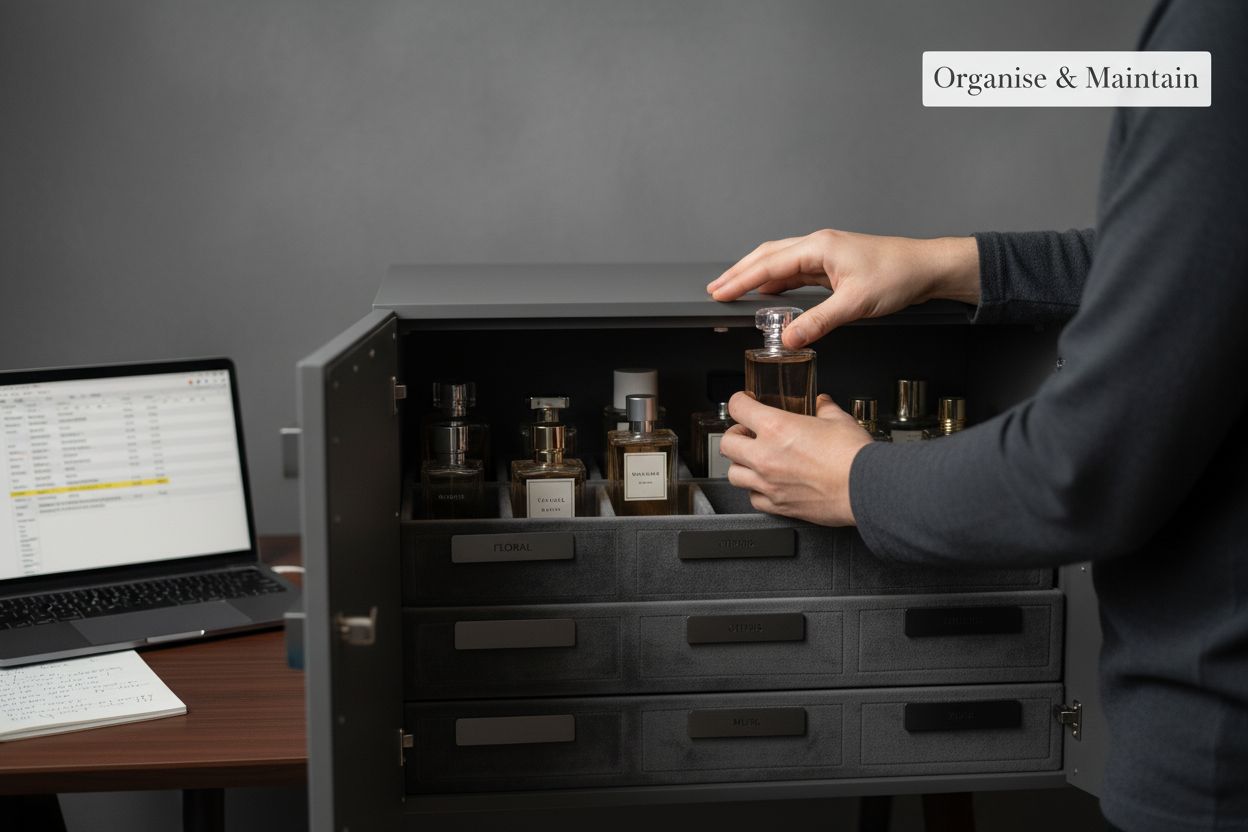
Elevate Your Fragrance Collection with Luxury for Every Occasion
You have learned how to define your fragrance preferences, curate a balanced selection, and avoid the high price of designer brands. Still, does building a collection for every occasion seem overwhelming due to choice, budget, or access to authentic scents? At Versetparfums.shop, your journey is supported with a tailored experience for fragrance enthusiasts. Discover our Niche Perfumes | Verset Collection and explore aromatic storytelling inspired by the world’s best-loved designer fragrances.
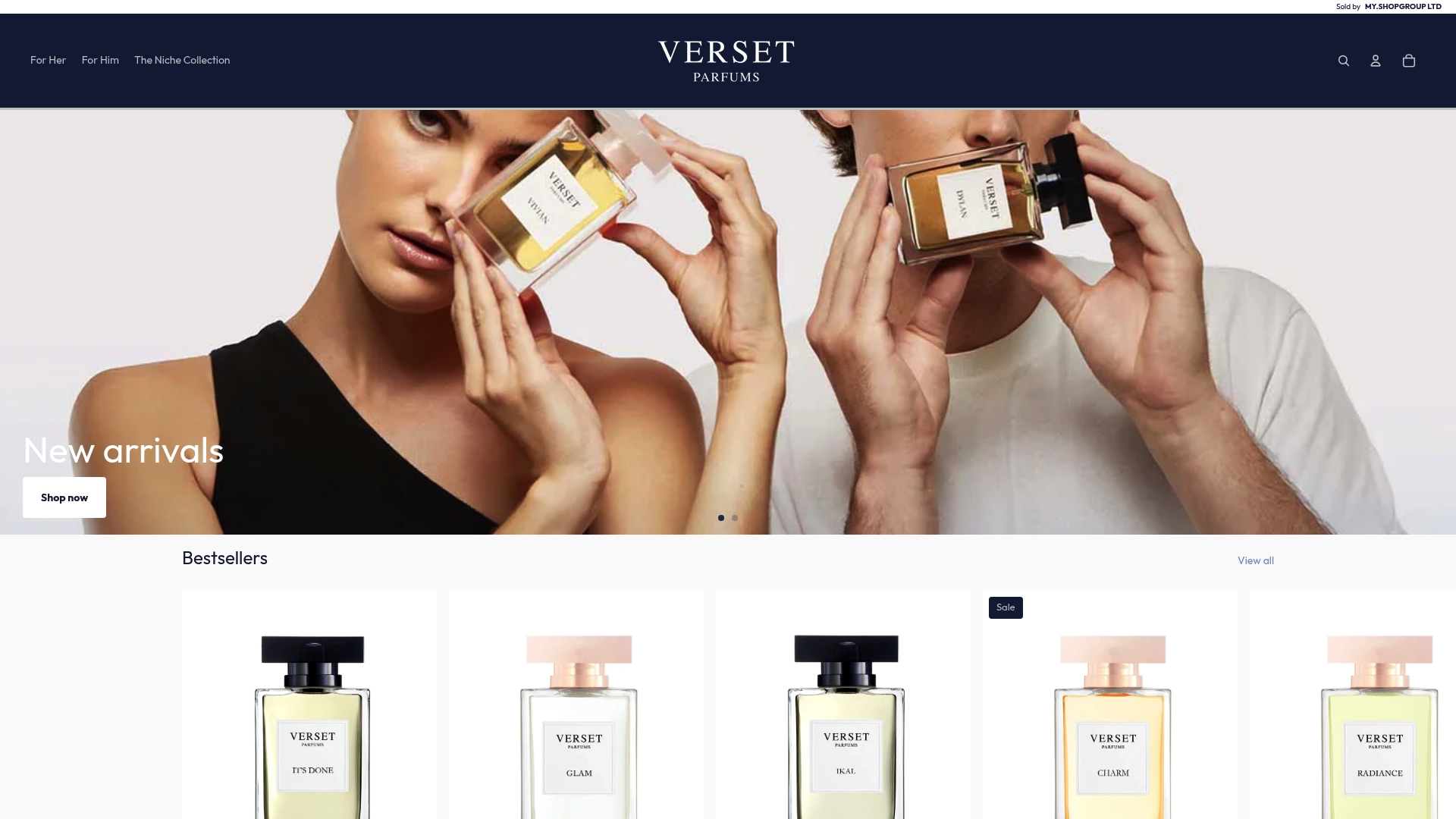
Step into the art of fragrance layering and versatility right now. Choose from our thoughtfully curated Women’s Niche Perfumes, Men’s Niche Perfumes, or the latest selections. Experience European craftsmanship and premium ingredients—without the premium price tag. Visit Versetparfums.shop today and start building a collection that truly reflects every moment and mood in your life.
Frequently Asked Questions
How do I determine my fragrance preferences?
Start by examining scents you’ve enjoyed in the past and reflecting on the emotions they evoke. Create a fragrance profile by exploring different fragrance families such as floral, oriental, fresh, woody, and gourmand, and pay attention to how each category resonates with you.
What are the main fragrance families to consider when building a collection?
The main fragrance families include floral (rose, jasmine), oriental (warm, spicy notes), woody (sandalwood, cedar), fresh (citrus, green), and gourmand (sweet, edible scents). Understanding these categories will help you curate a versatile collection that suits various occasions and moods.
How should I budget for my fragrance collection?
To budget effectively, assess your financial situation and create a tiered approach. Allocate 40% for foundational fragrances, 30% for statement perfumes, 20% for experimental purchases, and 10% for maintenance. This structure ensures thoughtful acquisitions while preventing impulse buys.
What is the best way to sample fragrances?
Collect samples from various sources, apply them to different areas of your skin, and wait 15-30 minutes to assess the scent’s full development. Document your impressions, fragrance families, and wear conditions to keep track of your sampling journey effectively.
Recommended
- Understanding Your Perfume Shopping Checklist for Elegance – VersetParfums.Shop
- 7 Examples of Fragrance Notes to Enhance Your Perfume Collection – VersetParfums.Shop
- Understanding the Fragrance Shopping Guide for Everyone – VersetParfums.Shop
- How to Shop by Fragrance Family for the Perfect Scent – VersetParfums.Shop

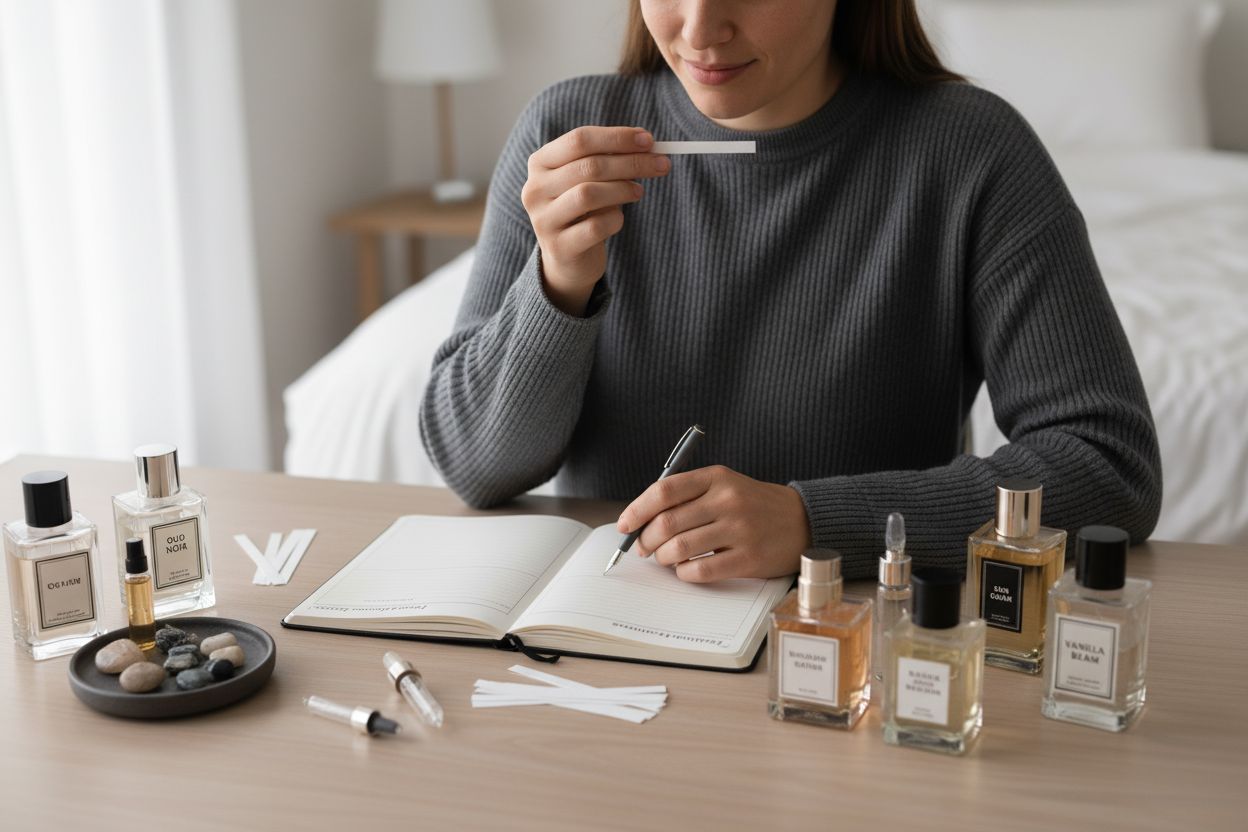


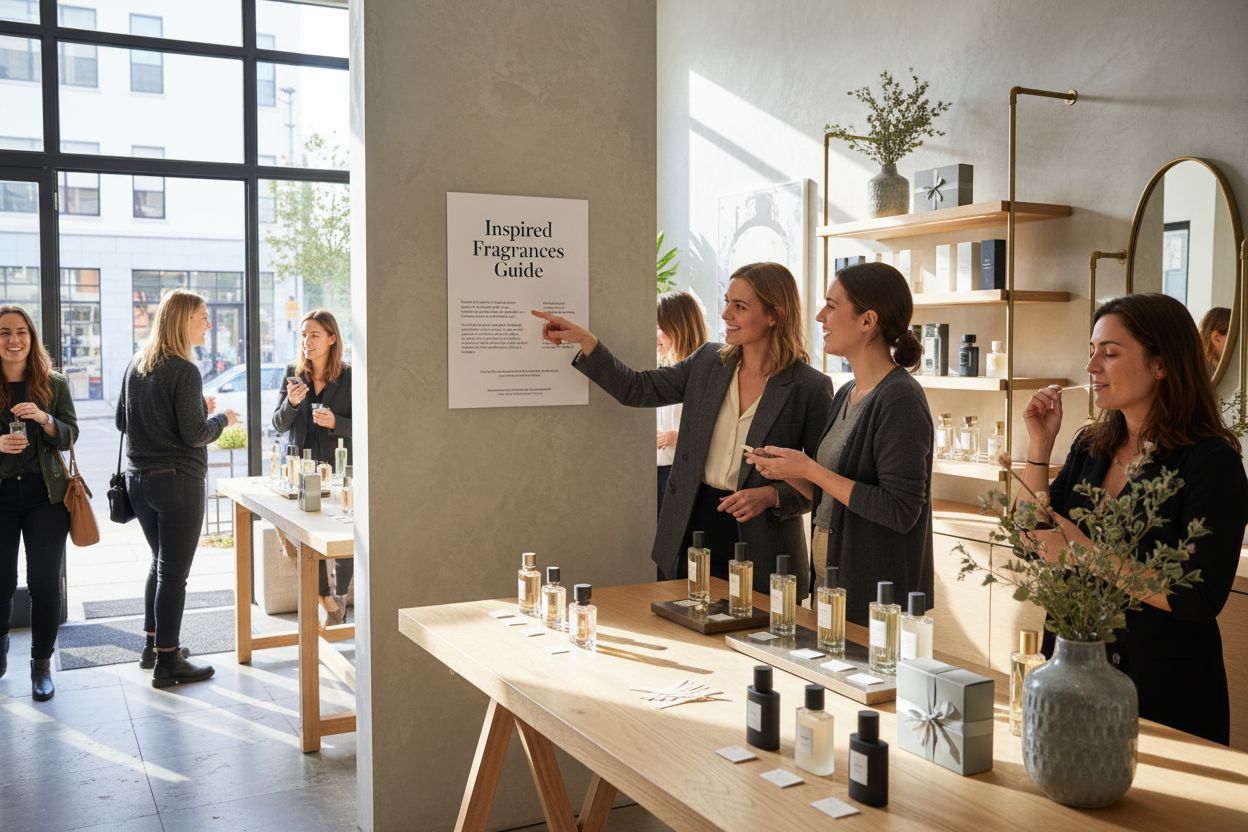
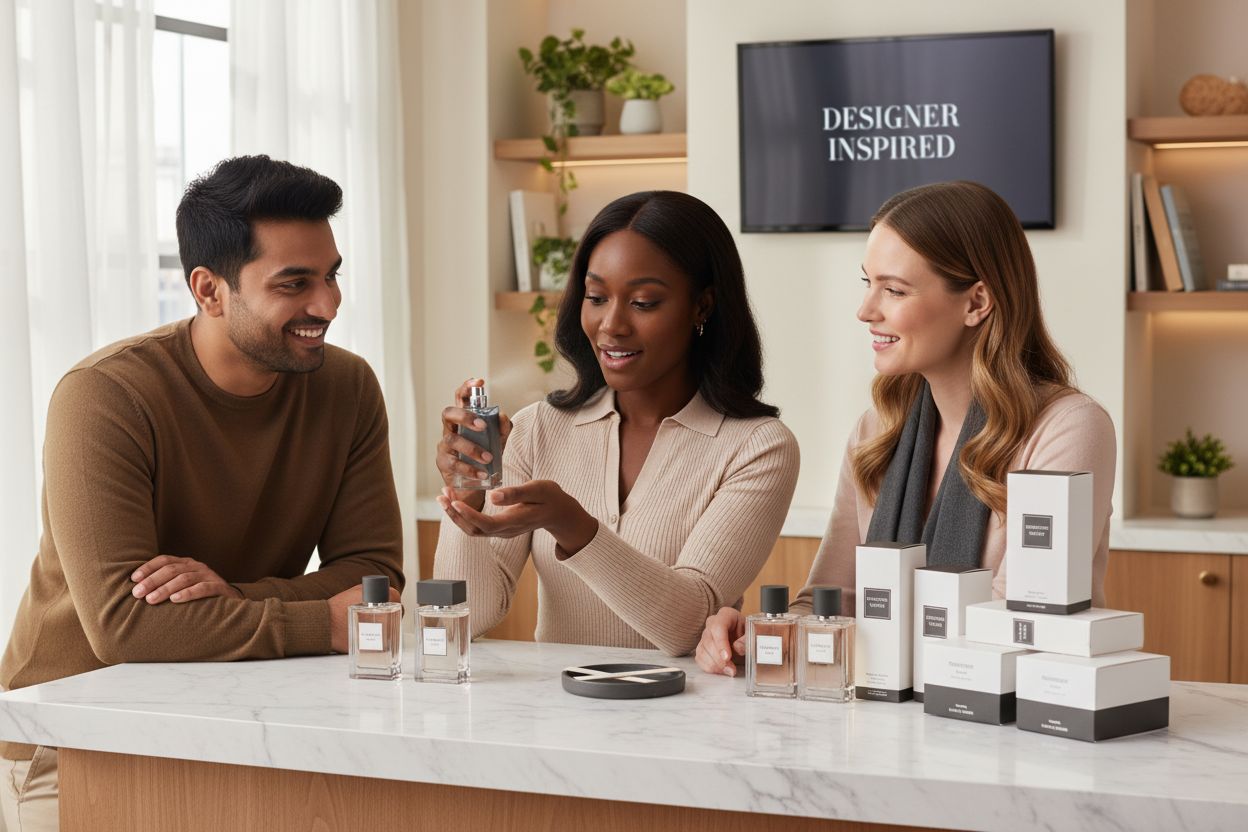


0 comments